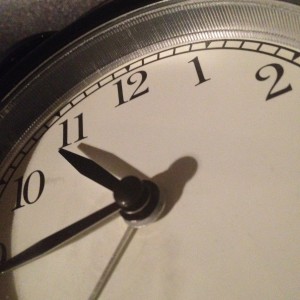Falling Back
F all back. Spring forward. There’s a lot of talk going back and forth about the relevance of Daylight Savings Time (DST). 110 years ago, the concept was proposed as a temporary means of conserving energy, and providing extra time for farmers to work the fields. That’s not the case nowadays. We still follow the ritual even though it disrupts our sleep cycle and has adverse effects on our health. Is daylight savings worth the time?
all back. Spring forward. There’s a lot of talk going back and forth about the relevance of Daylight Savings Time (DST). 110 years ago, the concept was proposed as a temporary means of conserving energy, and providing extra time for farmers to work the fields. That’s not the case nowadays. We still follow the ritual even though it disrupts our sleep cycle and has adverse effects on our health. Is daylight savings worth the time?
In 2007, Canada extended Daylight Savings Time, advancing it by three weeks into March and ending it one week later in November. Who doesn’t appreciate the extra daytime, especially in the summer? More time for road trips, gardening, exercise, and lots of vitamin D. While the benefits are obvious, there is a downside to altering time.
Time-shifting throws off our circadian rhythm, and that can cause sleep disorders and trigger depression and seasonal affective disorder. Our bodies need time to adjust after an internal clock reset. The drowsy effect slows our reaction time and cognitive functioning. Studies show that there are more vehicular accidents in the first days after springing forward. In the fall too, as drivers adjust to darkness at evening rush-hour, there are more accidents in the first few weeks of standard time involving pedestrians. For a sleep-deprived society, changing our bedtime routine is a sensitive subject according to the Sleep Research Lab at the University of Ottawa. In anticipation of the time change (springing forward or falling back), try adjusting your bedtime and wake-time slowly, in 15-minute increments over several days.
- Take advantage of the opportunity to get an extra hour of sleep. Don’t stay up later in anticipation of the time change.
- Eat healthy and make sure you have a good breakfast, since mealtimes can act as a trigger to help your body clock readjust.
- Stay hydrated. Avoid caffeinated beverages, since too much caffeine can further disrupt your natural sleep rhythm.
- Increase your exposure to bright light and physical activity during the day and until late afternoon/early evening to help compensate for the overall reduction of daylight hours.
- Get your daily dose of Vitamin D. The best ways to get the Vitamin D you need are to get adequate sun exposure (15 to 30 minutes per day in summer/southern regions — it’s very difficult to get enough exposure in winter in northern regions because of reduced UV levels), or to take vitamin D supplements.
- Drivers should be extra alert — pull over if you’re driving and feel drowsy. The only cure for sleepiness is sleep. Opening the window or turning up the radio are not effective ways to stay awake.
At least we fall back after Halloween so that gives a little extra time for trick-or-treaters – the young, and the young at heart – to enjoy the night. For that reason alone, daylight savings may be worth the time.
Daylight Savings Time ends on Sunday, Nov. 4 at 2 a.m. (local time).






 Wheelchair in Motion Limited | Van Rentals in Ontario
Wheelchair in Motion Limited | Van Rentals in Ontario